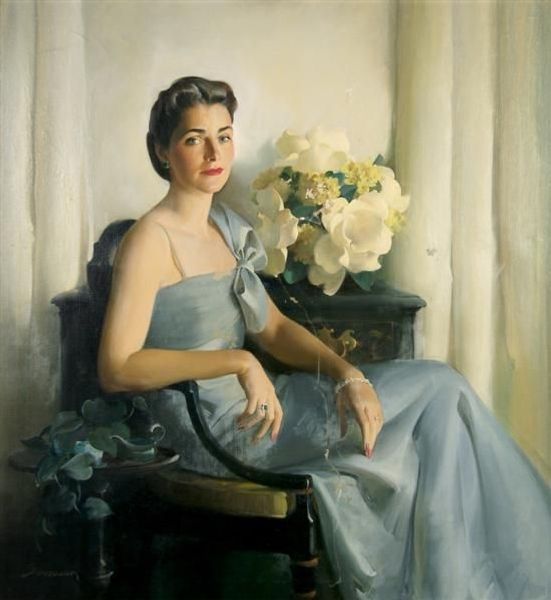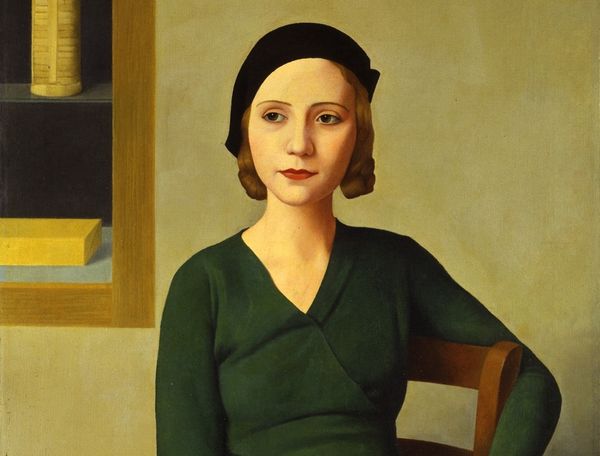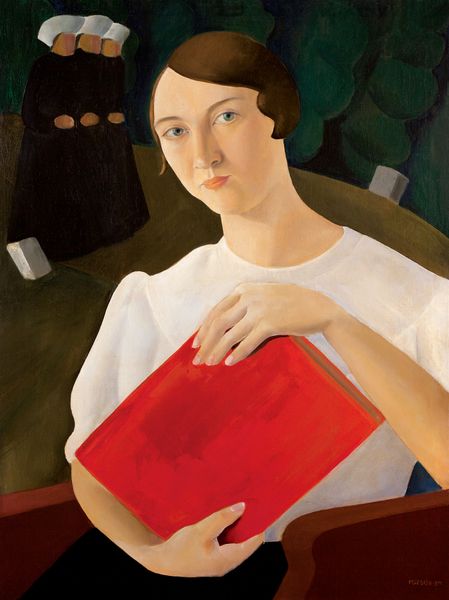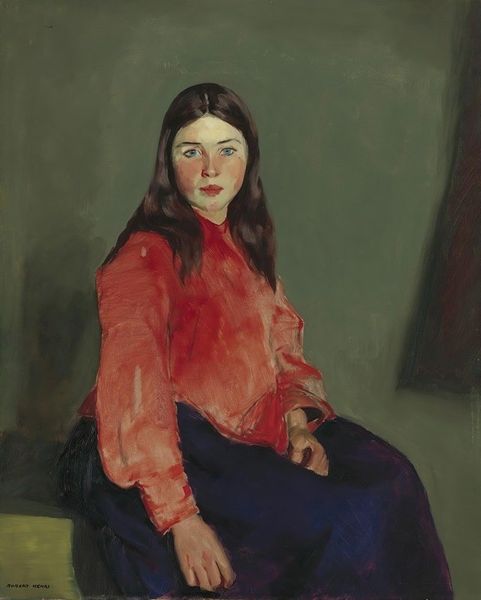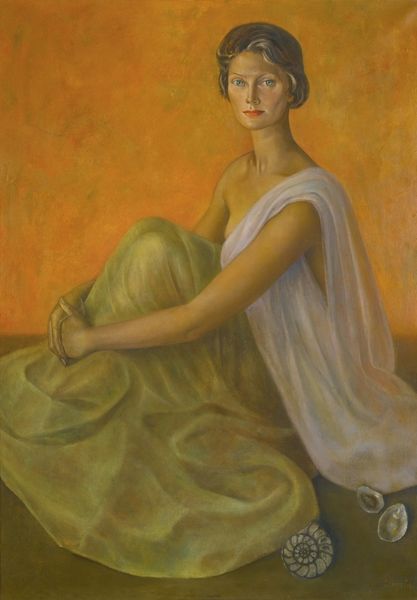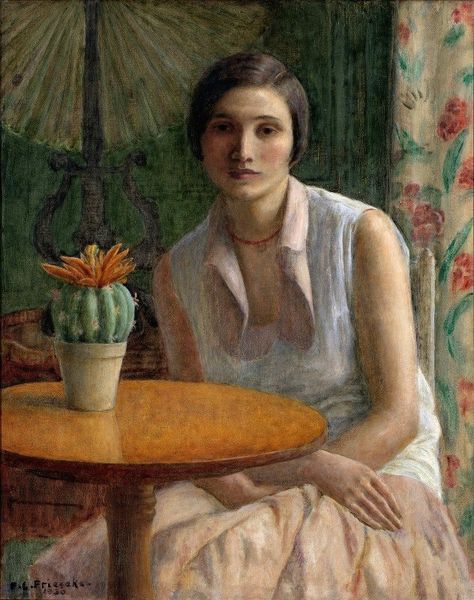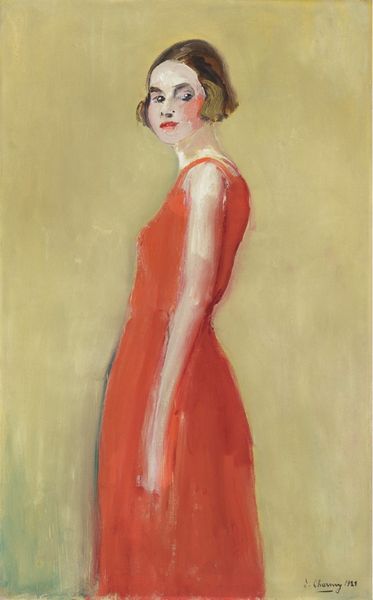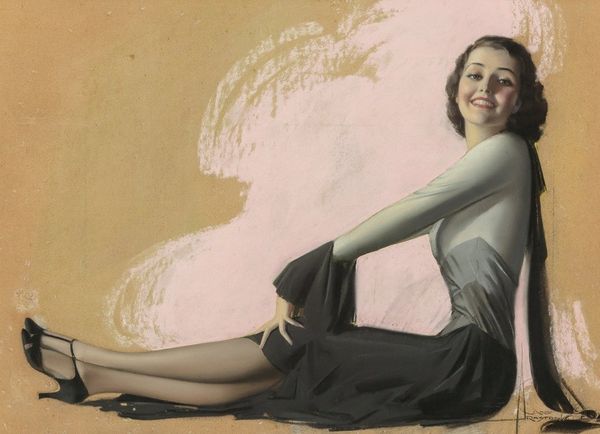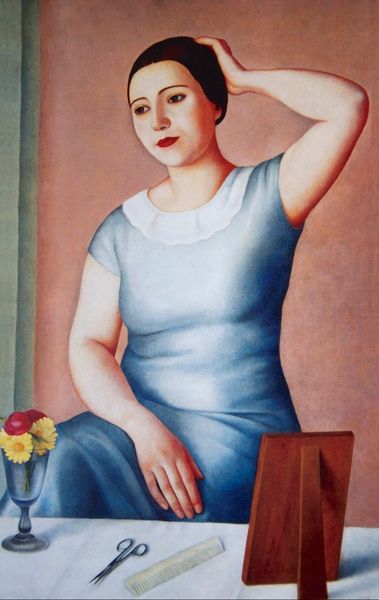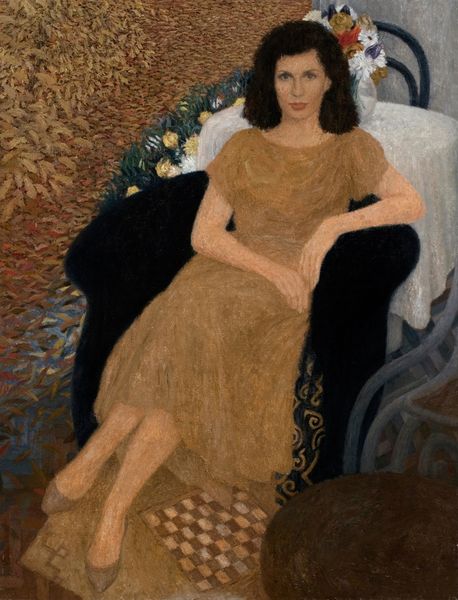
Dimensions: support: 1208 x 1412 mm frame: 1316 x 1518 x 59 mm
Copyright: © Tate | CC-BY-NC-ND 4.0 DEED, Photo: Tate
Editor: This is Meredith Frampton's "Marguerite Kelsey," housed at the Tate. I'm really drawn to the stillness, but I also notice the way the fabric drapes so elegantly. What can you tell me about the materials and their role in this piece? Curator: Frampton's focus on the material quality of the dress, the leather of the shoes, and even the sheen of the furniture directs our attention to their production. Who made these objects? What were the social conditions of their creation and consumption? Editor: That's fascinating. It shifts my perspective entirely, away from just admiring the aesthetic. Curator: Exactly! By highlighting materiality, Frampton invites us to consider the labor embedded within these everyday items. Editor: I never thought about it that way before; now I'm seeing it as a commentary on production and class. Thanks! Curator: Indeed. It's a powerful way to consider the social implications of the objects we surround ourselves with.
Comments
tate 5 months ago
⋮
http://www.tate.org.uk/art/artworks/frampton-marguerite-kelsey-t03415
Join the conversation
Join millions of artists and users on Artera today and experience the ultimate creative platform.
tate 5 months ago
⋮
A professional artist’s model in the 1920s and 1930s, Marguerite Kelsey (1908?–1995) was renowned for her gracefulness and ability to hold poses for a long time. Her dress and shoes were chosen and purchased by Frampton for this portrait. They are both classical and, being uncorseted, deliberately modern. The simple, short-sleeved pale tunic dress worn with low-heeled shoes and her straight hair were all essential elements of the fashionable boyish ‘garçonne style’ created by the couturiers Coco Chanel and Jean Patou from the mid-1920s. Gallery label, October 2016
